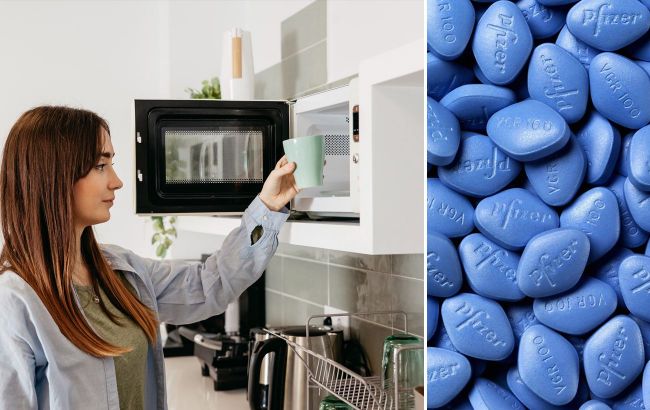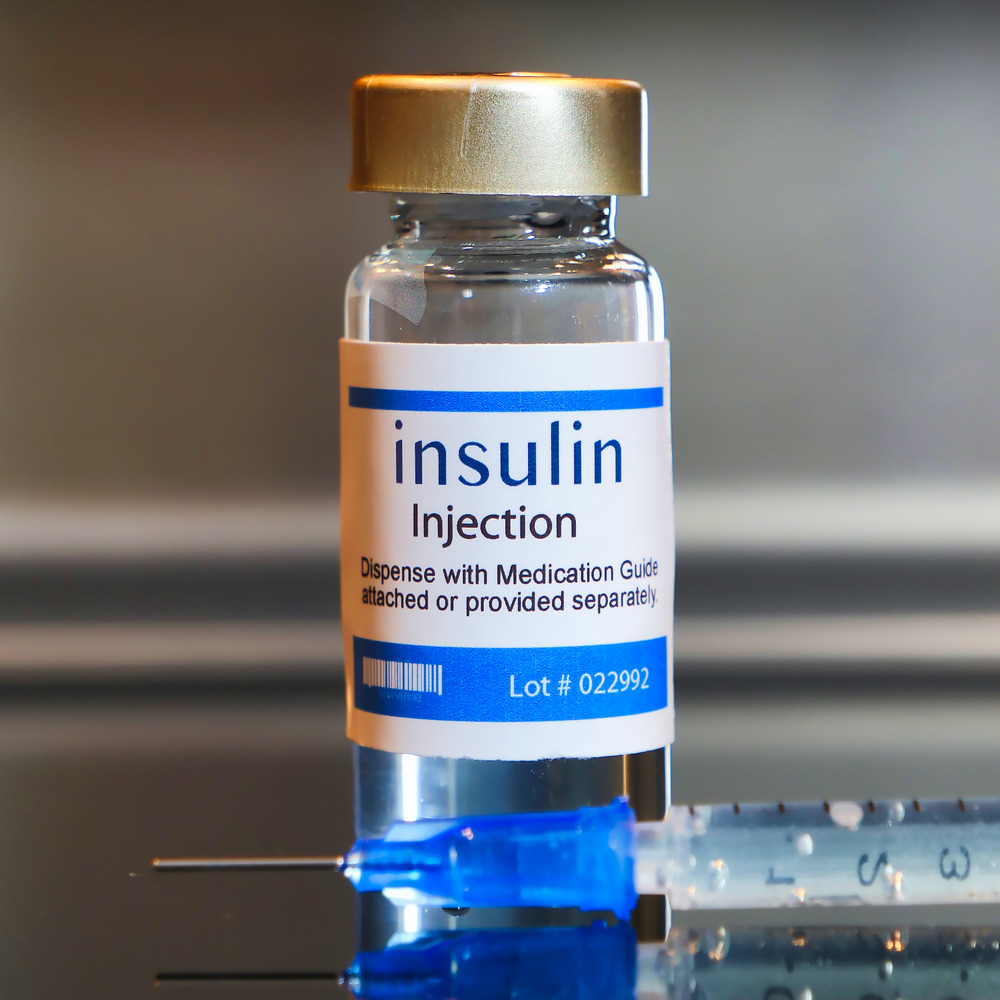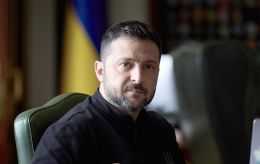Essential modern life things that were invented accidentally
 Scientists' discoveries that were made by accident (collage: RBC-Ukraine)
Scientists' discoveries that were made by accident (collage: RBC-Ukraine)
Scientists have been struggling for years to make discoveries and inventions, conducting numerous experiments. Sometimes discoveries happen unexpectedly, due to experimental errors, bad results, or a coincidence.
RBC-Ukraine tells about inventions that were made by accident and without which modern life is impossible.
The following sources were used to prepare the material: Concordia University Texas, History.com, HowStuffWorks.
Microwave oven
In 1945, self-taught American engineer Percy Spencer joined Raytheon Technologies Corporation, where he developed active radars for the US government.
While experimenting with microwaves, he accidentally discovered that they melted a chocolate bar in his pocket. Percy decided to use this effect for more interesting purposes than detecting airplanes.
Together with his assistant Raleigh Hanson, they created the world's first microwave oven, which they ironically named "Speedy Weenie".
Raytheon's management appreciated the potential of the idea, realizing that there was more money to be made in consumer electronics than in military projects.
The first microwave ovens were almost the size of a gas stove, connected to the water supply system because they were liquid-cooled, and were not very popular. But as soon as they figured out how to lower the temperature of the magnetron using air, the invention made a splash. As a result, in 1975, microwave ovens overtook gas stoves in sales in America.
 Percy Spenser's microwave oven (photo: National WWII Museum)
Percy Spenser's microwave oven (photo: National WWII Museum)
Velcro fastener
In 1941, Swiss engineer Georges de Mestral went hiking in the Alps with his dog. When he returned, he discovered that the dog's fur was covered in burdock.
Another person would have brushed the pet and forgotten about this unfortunate misunderstanding. But de Mestral had the mind of an inventor, so he tore off a few thorns and went to examine them under a microscope.
Then he examined his pants - also covered with thorns - and decided to create a material that would stick to everything just as well.
Georges experimented for nine years until he noticed that the nylon threads in the synthetic fabric formed the same hooks as the burdock when cut. It took him another year to invent a loom that would create such mini-hooks automatically. In 1951, de Mestral finally patented his invention.
However, at first, it was not very popular because the fabric looked unattractive. But in the early 1960s, de Mestral was invited to NASA to help create spacesuits for astronauts, and there he managed to make Velcro not only functional but also stylish.
As a result, the fabric was bought by manufacturers of suits for skiers, divers, and sailors.
Nowadays, Velcro is found literally everywhere: on clothes and shoes, in medical devices, and even on laptop charging cables.
 Velcro fastener (photo: Art News)
Velcro fastener (photo: Art News)
Saccharin
Saccharin, one of the most common artificial sweeteners in the world, contains almost no calories and is 400 times sweeter than sugar. This sweetener was discovered in 1878 by German chemist Constantin Falberg, who was researching coal tar at Johns Hopkins University at the time.
One day, after not washing his hands after work, Fahlberg returned home to find his fingers sweet. This led him to begin experimenting with the various chemical compounds he had worked with that day by putting them on his tongue.
In the course of these experiments, Fahlberg found that the sweet taste was caused by benzoic acid sulfimide. Together with Ira Remsen, the founder of the laboratory, he published several articles about this compound in the 1880s. In 1884, Konstantin patented his discovery under the name "saccharin" and began industrial production, which made him rich.
For a long time, benzoic acid sulfimide was not widely popular, but during the First World War, when sugar became scarce, it became a successful substitute. Also, nutritionists and diabetics welcomed saccharin because it had no nutritional value and did not increase glucose levels.
Currently, saccharin is widely used in the production of candy, cookies, toothpaste, chewing gum, and serves as a sweetener for medicines.

Saccharin (photo: IndiaMART)
Viagra
Viagra was the first erectile dysfunction drug in the world, but its original purpose was quite different. Pfizer was developing the chemical sildenafil with the hope of creating a drug to treat heart disease.
However, clinical trials revealed that Viagra had no healing effect on the heart. Instead, an unexpected effect was found: men who took the pill experienced powerful erections.
After that, Pfizer quickly realized the new possibilities and conducted additional research. This time, the drug was tested on 4,000 men with erectile dysfunction, and the results were impressive.
 Viagra pills (photo: NBC News)
Viagra pills (photo: NBC News)
Insulin
In 1889, two doctors from the University of Strasbourg, Oscar Minkowski and Joseph von Mehring, conducted research on the effect of the pancreas on digestion. To do this, they experimented by cutting out this organ from a dog.
A few days after the experiment, the researchers noticed that flies were gathering around the dog's urine. When they decided to test the urine, they found high levels of sugar.
Scientists realized that they had accidentally made the dog diabetic and realized that the pancreas plays a role in regulating blood sugar levels. Later, between 1920 and 1922, researchers at the University of Toronto, building on the work of Minkowski and von Mehring, were able to isolate the pancreatic secretion and named it insulin.
 Insulin (photo: HealthCentral)
Insulin (photo: HealthCentral)
Anesthesia
In 1772, the English test engineer and chemist Joseph Priestley synthesized nitrous oxide and named it dephlogisticated nitrogen air. Phlogiston was an imaginary "combustible invisible gas" that scientists explained combustion by its presence.
Later, in 1794, Thomas Beddoes and James Watt managed to construct a device for breathing it, and they decided to use it to treat tuberculosis.
The apparatus was installed in Beddows' basement and they began testing "medical air" therapy on patients. Humphrey Davy, an assistant, was appointed to take care of it. He noticed that the tuberculosis patients who were exposed to nitrous oxide were becoming too cheerful.
Hampfrey realized that the apparatus could be used in a more interesting way. He called the substance released "laughing gas" and from 1799 began to organize parties for British aristocrats, during which he dosed guests with nitrous oxide.
Lords and ladies, having inhaled the gas, began to laugh and even rolled on the floor in frantic bouts of euphoria. At the same time, Hampfrey gave those who wished to breathe the ether, which had the opposite effect - drowsiness and peace.
For almost 44 years, the only function of nitrous oxide was to entertain the rich, who were satiated with pleasures, until on December 11, 1844, dentist Horace Wells figured out how to use this substance to pull teeth painlessly. That was how anesthesia was invented.

Anesthesia (photo: RSC Education)
Teflon
The material that coats your pans was discovered by accident. In 1938, chemist Roy Plunkett of Dupont was working on a new refrigerant. One of the substances he was experimenting with was tetrafluoroethylene gas.
Plunkett put a cylinder of the gas in dry ice and left it for a while. When he returned, he found that there was no gas in the cylinder, although it was closed. Out of curiosity, Plunkett cut open the cylinder and found that due to the cold and contact with iron, the gas had turned into a substance that had settled on the walls of the vessel. It turned out to be heat-resistant, slippery, and inert to acids.
Dupont patented this substance in 1941 and in 1945 registered it under the Teflon trademark. Initially, it was used in uranium enrichment facilities to cover valves and seals in pipes with highly reactive uranium hexafluoride.
However, Teflon found other applications. In 1954, French engineer Marc Gregoire, out of curiosity, coated his fishing tackle with this material. His wife Colette suggested that he do the same with her frying pans.
Gregoire coated the frying pan with a mixture of Teflon and aluminum and named it Tefal.
 Teflon (photo: Reading Plastic)
Teflon (photo: Reading Plastic)

